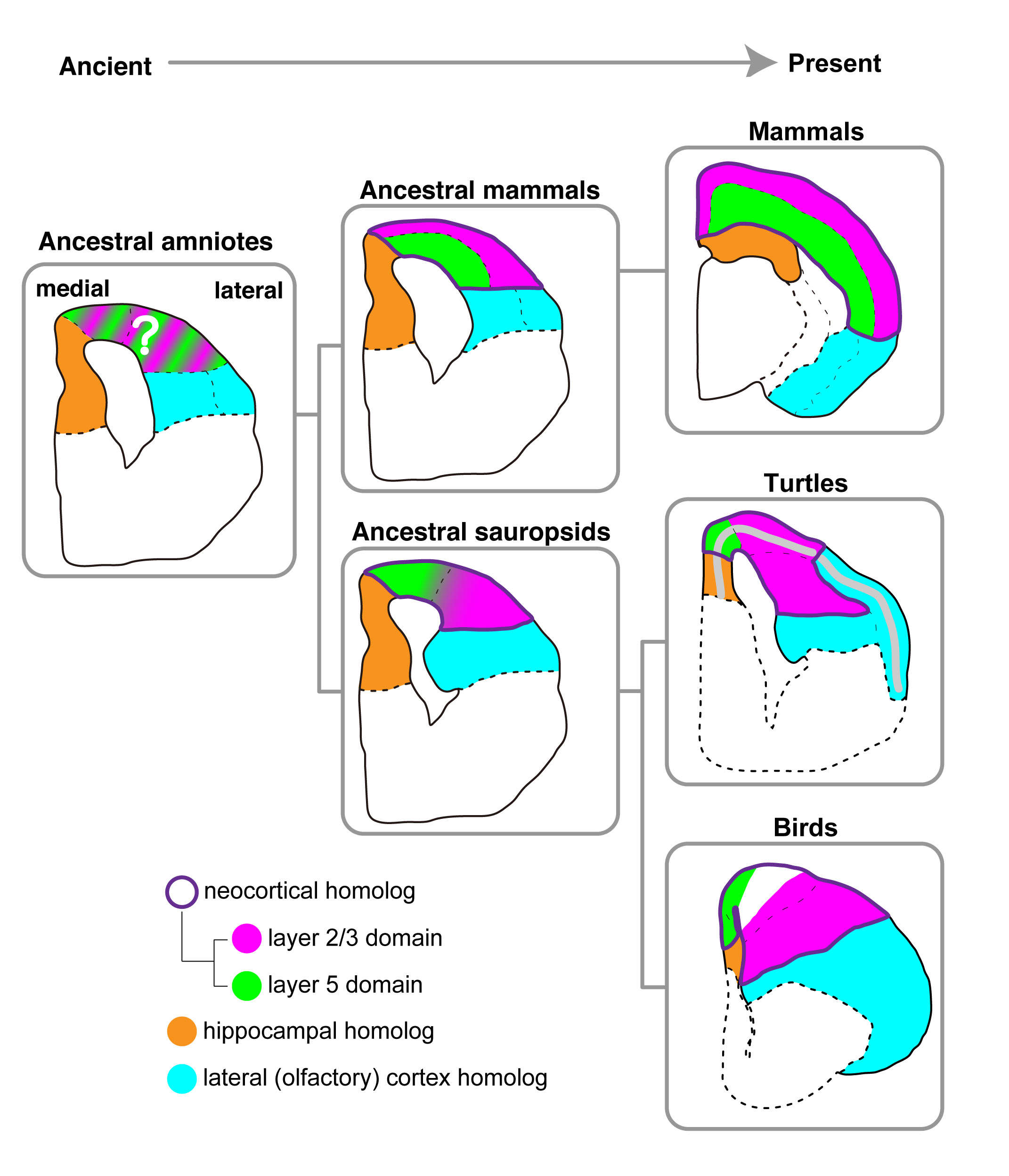Turtle’s and chicken’s brains are similar!?
Division of Brain Function • Hirata Group
A common developmental plan for neocortical gene-expressing neurons in the pallium of the domestic chickenGallus gallus domesticus and the Chinese softshell turtle Pelodiscus sinensis.
I. K. Suzuki and T. Hirata Front. Neuroanat.(2014) 8 20 doi: 10.3389/fnana.2014.00020The highly evolved neocortex is a marked characteristic of mammals. It develops as layers, in which neurons are sequentially added from deep to the surface in a birth-order-dependent manner. Evolutionary processes of the layered neocortex have been a long mystery. We recently reported that the chicken brain contains neuron subtypes that are similar to deep and upper layer neurons in the mammalian neocortex . However, the comparison of only two distant animal groups was not sufficient to specify potential evolutional changes, and similar analyses of other animal groups have been awaited. In this study, we performed gene expression analyses in the softshell turtle brain, which is often referred to as an ancestral form of amniote brains. The turtle brain contains a single neuronal layer, exhibiting a clear difference from the chicken brain. Our expression analyses of orthologs of neocortical layer marker genes highlighted similarities in neuronal arrangements between the two species. Specifically, in both of the species, deep layer neurons are positioned in the medial part, whereas upper layer neurons are positioned in the lateral part. Thus, this medio-lateral neuronal arrangement appears to be an ancestral mode in sauropsids. The results support our hypothesis of an ancient origin of neocortical neuron subtypes. We assume that the generality of birth-order-dependent mechanisms for specification of neuron subtypes probably underlies the their unexpected conservation among diverse amniote species.

Evolutionary model of brains in amniotes















